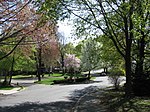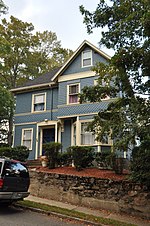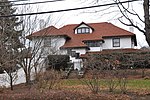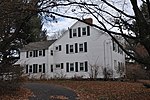House at 95 Chestnut Street
Greek Revival architecture in MassachusettsHouses completed in 1849Houses on the National Register of Historic Places in Wakefield, MassachusettsWakefield, Massachusetts Registered Historic Place stubs

95 Chestnut Street is a historic house located in Wakefield, Massachusetts. It is significant as an example of a well-preserved vernacular Greek Revival style house.
Excerpt from the Wikipedia article House at 95 Chestnut Street (License: CC BY-SA 3.0, Authors, Images).House at 95 Chestnut Street
Chestnut Street,
Geographical coordinates (GPS) Address Nearby Places Show on map
Geographical coordinates (GPS)
| Latitude | Longitude |
|---|---|
| N 42.501666666667 ° | E -71.083333333333 ° |
Address
Chestnut Street 97
01880
Massachusetts, United States
Open on Google Maps











